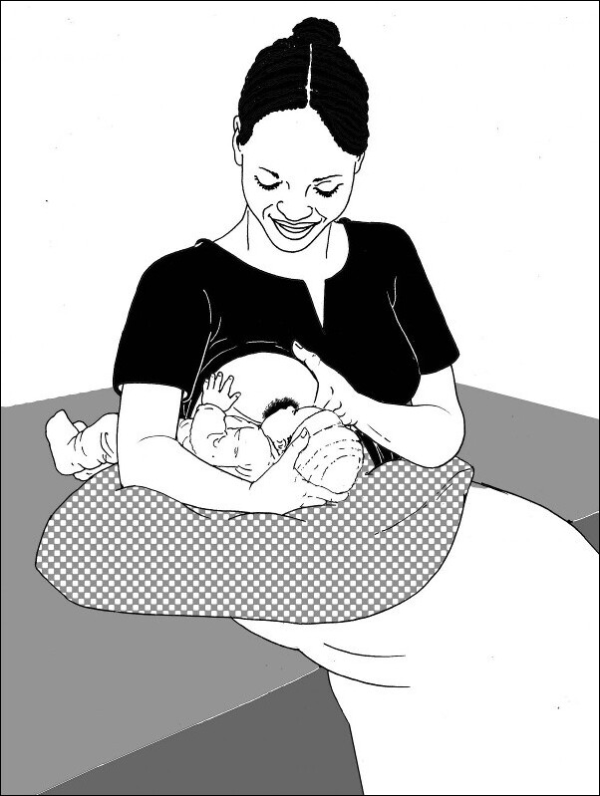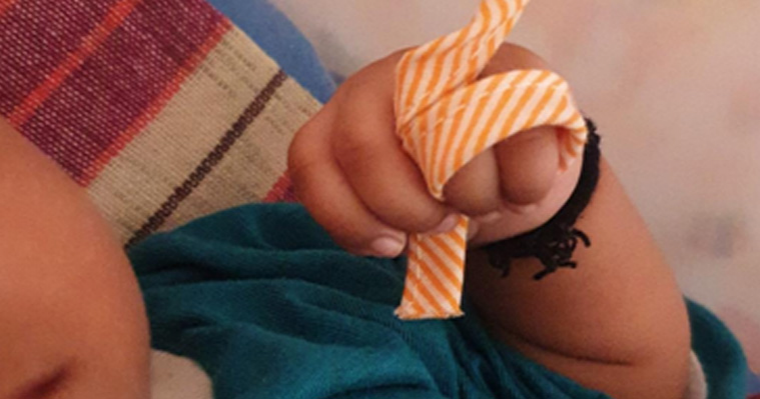Image Source: https://iycf.advancingnutrition.org/
The importance of breastfeeding your new-born cannot be overemphasized. It is the most natural way to provide not only nutrition but closeness, warmth, security and protection from diseases.
Most mothers during their pregnancy become aware of the hazards of not breastfeeding, thanks to the myriad of literature available on the websites and social media. However, correct, evidence-based information is hard to find. Every day I happen to counsel mothers, who, unfortunately, received inadequate help or conflicting advice from their doctors, the hospital nurses, their own mothers and friends- and of course the internet.
If you are pregnant and eager to breastfeed, you should know that most medical interventions which happen during labour and birth are likely to have an effect on breastfeeding. Babies are hardwired to seek the nipple and initiate breastfeeding on their own at birth(www.breastcrawl.org) However, being exposed to medications and other procedures, the new-born is often not able to crawl up to the breast and latch on without help.
Let us talk about Epidurals for example. When a labouring woman has an epidural(anaesthesia to reduce labour pain), she also gets IV fluids to prevent her blood pressure from dropping. This fluid gets into the baby's body and the baby is born "heavier" than his true weight. The baby loses this extra fluid via urine very fast. If this gets recorded as a weight loss of >10% of the birth weight, baby is started on supplements(formula), as many hospitals follow this protocol.
Sometimes there is a difference in weighing scales. Even if the weight loss were real, ideally, every effort should be taken to improve the breastfeeding first. This includes skilled lactation support, improving latching and positioning, increasing mother baby skin- to- skin contact, increasing the nursing frequency, getting the mother to hand express, etc. But unfortunately, the only immediate and easy response we see is to give the baby formula. This undermines the mother's confidence, and she gets the impression that her milk is not enough.
Another common complaint is that the baby is refusing to latch. This may happen if the baby was fed formula with a bottle early on in life and has now developed a preference for the fast flow of the bottle nipple. It could also be due to swelling on the mother's areola which is caused by excess IV fluids. The nurses are quick to pronounce-mother has flat nipples-again drawing her to despair! She is prescribed a nipple shield, where actually simple techniques such as reverse pressure softening can relieve the swelling and help the baby latch.
The most common misconception is that mothers having a C-section cannot initiate breastfeeding within one hour as recommended. In fact if the mother is not sedated, she can stay awake during her surgery and give the baby immediate skin -to -skin contact as soon as delivered. While the surgeon stitches up the incision, the nurses and anaesthetist can help her initiate breastfeeding on the operation table itself. Family awareness and support is crucial for this, usually we find the family asking the doctor to 'let her rest' and the baby ends up getting formula on day one. This is completely unnecessary. The C-section mom, if helped, can breastfeed successfully in lying down position.
Many mothers and even health professionals believe that there is not enough to meet the baby's needs in the first few days. More often than not, the problem is that milk is available but it is not reaching the baby. During the early days the baby is designed to feed frequently, receiving very small amounts of colostrum at each feeding. Frequent feeds stimulate the mother's system to produce more. Babies who are given supplements nurse less often and do not send the 'make more milk' signals to the mother. Low blood glucose and jaundice can also be prevented by keeping the mother and baby always together and allowing free access to the breast in correctly latched positions. Correct latching also prevents sore nipples and ensures good milk transfer. Gradually as the baby's stomach expands and his demand per feed increases, so will the mother's supply. Nature has designed this transition beautifully and it works best if not interfered with.
If for some valid reason that is medically indicated, the baby has to be given supplements, it can be done at the breast using a nursing- supplementer. The baby learns to breastfeed by breastfeeding and there's no reason to use the bottle or separate the baby from the breast. Other feeding methods could be spoon or cup.
If the baby is low birth weight, premature, or otherwise in need of intensive care-it leads to mother- baby separation which can be detrimental to breastfeeding later. Baby- friendly hospitals encourage Kangaroo care where the mothers or even the fathers, wear the baby on their body. Mother is encouraged to start milk expression as soon as she can after birth, initially by hand and from day 3 using a double sided hospital grade pump. If she expresses milk at least 8 times a day, her supply is well maintained, so she can breastfeed her baby when the baby is well enough to do so. So even for NICU babies, breastmilk with its vital benefits is the best option and these babies need not be given formula.
So having understood how it is possible to maintain breastfeeding in the hospital against all odds, let us summarise how a good beginning can lead to a satisfying and successful breastfeeding experience:
- Plan to have a birth with as few interventions as possible.
- Have your baby skin-to-skin immediately after birth. Allow time to initiate breastfeeding within one hour, with the breast-crawl or self-attachment(www.breastcrawl.org).
- You and your baby should always be together- preferably skin- to -skin, to allow free access to the breast and frequent unscheduled feeds (at least 10-12 times in 24 hours).
- Learn about correct attachment and positioning and seek skilled breastfeeding support if you find it difficult to achieve.
- Don't give the baby any artificial nipples(pacifier, bottle, etc.).
- There should be no restriction on the duration or frequency of feedings, with focus on proper latching at all times.
- Don't give the baby water, glucose solution, or formula unless medically indicated-which should be rare. Use a nursing supplementer at breast to feed this, or a spoon or feeding cup.
- If babies cry or appear unsettled - it doesn't always mean the baby is hungry. Skin -to –skin, latch correction and frequent stimulation usually helps.
It is best to discuss all your feeding preferences with your care giver before birth. Read up and arm yourself with the right knowledge. Books such as THE WOMANLY ART OF BREASTFEEDING are definitely a must- have to guide you through the ups and downs. Websites such as llli.org and kellymom.com carry good articles on various aspects of breastfeeding. Attend a good breastfeeding class or have a counselling session scheduled with your lactation consultant in pregnancy to learn about all practical aspects and clear all your doubts before -hand. This will give you the confidence to insist upon right practices and to avoid the interventions which are unnecessary or which may hamper breastfeeding.
- Dr. Manisha Gogri is an International Board Certified Lactation Consultant practicing privately in Mumbai since last eleven years. She leads a mother support group and has been actively working with La Leche League International(LLLI) and the Breastfeeding Promotion Network of India (BPNI Mah.)





















